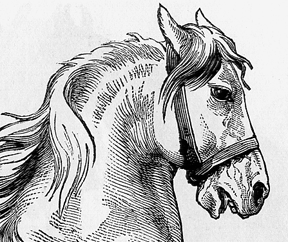 Have you ever thought how artists come
up with the greatest drawings that leave
you wishing you knew how to draw? Well
most of them didn't grow up drawing, they
learnt the art of drawing. Whether you
dream of becoming the next Pablo
Picasso or are simply thinking of giving your own
imagination a creative outlet, you can learn how to draw
in three simple steps. Here, take a look.
Step 1: Start with a rough sketch
Beginners who wish to be great artists should start by
drawing the simplest things from a rough sketch. For
instance, if you are drawing a flower, don't draw one petal
at a time. You may end up drawing
Have you ever thought how artists come
up with the greatest drawings that leave
you wishing you knew how to draw? Well
most of them didn't grow up drawing, they
learnt the art of drawing. Whether you
dream of becoming the next Pablo
Picasso or are simply thinking of giving your own
imagination a creative outlet, you can learn how to draw
in three simple steps. Here, take a look.
Step 1: Start with a rough sketch
Beginners who wish to be great artists should start by
drawing the simplest things from a rough sketch. For
instance, if you are drawing a flower, don't draw one petal
at a time. You may end up drawing one section of the object and forgetting about the big picture. If you ignore sketching what you want to draw you may also end up running out of room or end up with an unattractive imbalanced picture. When it comes to sketching, simply use light repeated strokes and loosen things up. You are bound to make mistakes but don't mind about them. This is simply putting a general idea on paper and not perfecting it. If you are drawing a real object, compare what you have sketched and what is on the original object. The sizes of the shapes relative to each other should be as accurate as possible. Imagine what you want your flower to look like ultimately then have a light sketch of your imagination with a pencil. The best way to have a more realistic drawing is to imagine the basic shapes the object is made of. Step 2: Enhance your sketch You can use darker/heavier line to elaborate your sketch. This is a great way to bring out parts of the drawing you need. You can take out the lines you don't need. You can add details to your drawing bit by bit but always make sure you look back to see if it has what you wanted. There are several techniques you can use to enhance your ability to express ideas through your art. You can draw with shadings. Think of how the light hits an object and which parts of the body need more light or need to be darker. This is a simple way to add intensity, depth and luminosity to your drawing. It is also important to practice with shadows if you wish to have a more realistic drawing. You can be good at shadows if you study and understand the way light normally reflects from objects and the shadow that its leaves. Step 3: Add realism touches Understand what makes a certain object look real in a drawing. Mastering this practice is key if you want to make your drawings appear more life-like. This involves familiarizing yourself with perspective-meaning things that are far look smaller and that ones that are nearer look bigger. Also understand the proportion of the image-how different parts of an object relate to each other. With that in mind, you will be able to have a drawing that looks better than what you used to draw. You will not have a perfect drawing at first. It is important to understand that drawing is an art that gets better with practice.
Comments
Post a Comment